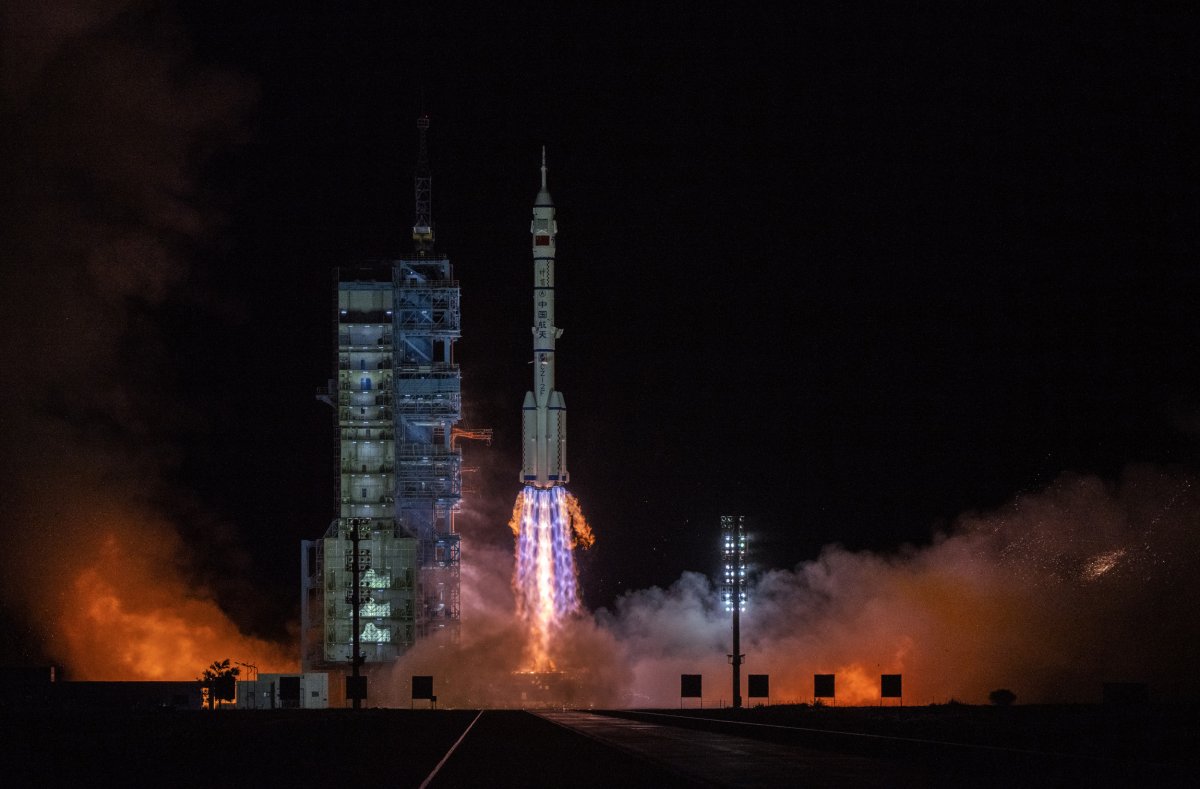Chinese scientists have conducted a successful test of the world's most powerful rocket engine, marking a significant step forward for the country's launch vehicle technologies, a state media report said on Tuesday.
The monolithic solid rocket motor, developed by a branch of the Aerospace Science and Technology Corporation (CASC)—a state-owned contractor of the Chinese space program—is 3.5 meters (11.5 feet) in diameter and has a thrust of 500 tons, according to China's state broadcaster CCTV, which described it as the largest in the world.
The report said the rocket was independently designed by CASC's Academy of Aerospace Solid Propulsion Technology with a "high-performance" fiber composite shell and a "supersized" nozzle. It has a propellant capacity of 150 tons and is likely to play a central role in China's future manned missions to the moon and Mars.
CCTV, which remarked on the rocket's "world-leading" technologies, said: "This success marks a substantial increase in China's solid-carrying capacity and is of great significance to the future development of large and heavy-lift launch vehicle technologies."
A monolithic solid rocket motor with the largest thrust in the world, independently developed by #China, was successfully tested on Tuesday. pic.twitter.com/zovr4SOgJl
— CGTN (@CGTNOfficial) October 19, 2021
The country's rocket propulsion technology has progressed at a "gratifying pace" in recent years, but its heavy- and super heavy-lift launch vehicles still lag behind current world leaders, said the report. The broadcaster noted that the latest test marks the completion of a three-step process—beginning in 2009—which saw Chinese rocket engines develop from 120 tons to 200 tons and finally 500 tons in thrust.
The state media outlet said the original designs by the CASC academy are "not only safe and reliable, but also high-quality, low-cost, easy to use and durable."
Tuesday's test is another sign that China's space ambitions—backed by the most senior leadership—are looking long. Its 500-ton engine will power the next-generation Long March 9 rocket, which is under development and scheduled to operate by the end of the decade, Hong Kong's South China Morning Post reported in May.
Long March 9 could launch China's first crewed missions to the moon after 2030, with manned trips to Mars following that. China and Russia are also looking to jointly establish a lunar base after 2035.
Over the weekend, a group of three Chinese astronauts embarked on what will become their nation's longest-ever space mission. The crew of Shenzhou-13 docked with the Tianhe core module of China's Tiangong space station for six months, surpassing the Shenzhen 12 crew's previous record of 90 days in low-Earth orbit.
The crew of Shenzhou-13 are scheduled to return in spring 2022.

Uncommon Knowledge
Newsweek is committed to challenging conventional wisdom and finding connections in the search for common ground.
Newsweek is committed to challenging conventional wisdom and finding connections in the search for common ground.
About the writer
John Feng is Newsweek's contributing editor for Asia based in Taichung, Taiwan. His focus is on East Asian politics. He ... Read more
To read how Newsweek uses AI as a newsroom tool, Click here.








